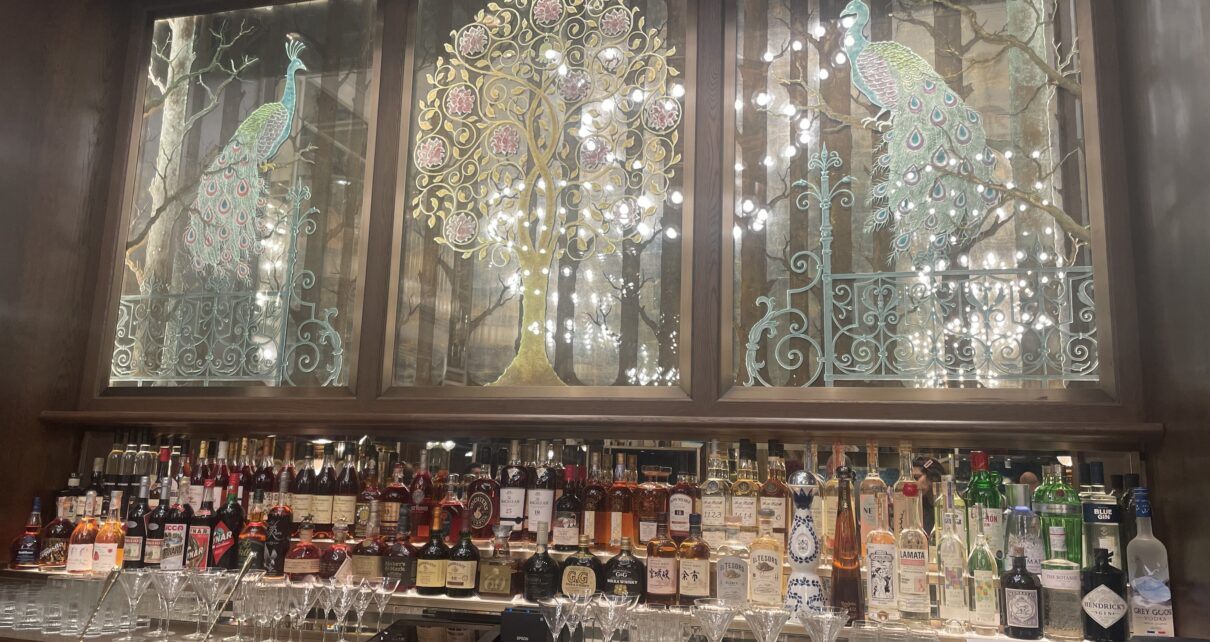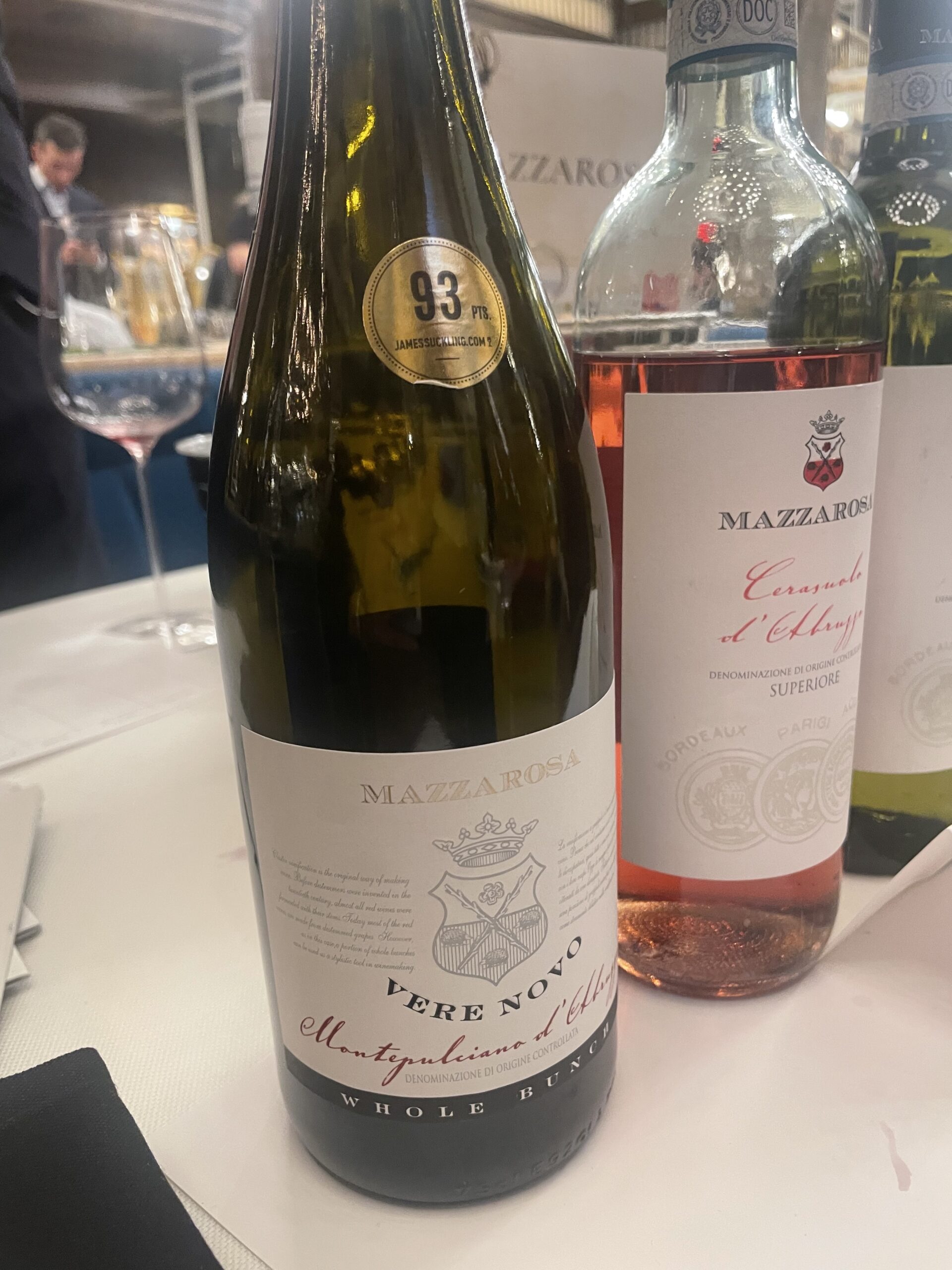As a kid, I religiously peeled the skins off grapes first. A bitter foil to the soft fleshened interior to follow, I bit them brief and swallowed whole as a sort of drum roll. That stark of a distinction between the skin and its grape body hadn’t existed again until this day… several decades later.
Grape Skin Contact, or no Skin Contact? Seemed to be the running theme at last week’s mid-week afternoon Abruzzo Wine tasting. Set in the exquisitely ornate and yet-to-be opened 250 fifth avenue Hotel, in NOMAD NYC, the designated tasting room felt ‘cathedral meets theater’—reminiscent of a rated PG version of The Box on Chrystie. Importers, restaurateurs, and sommeliers coalescing in broad daylight to really see and meet Wines’ faces and families. I was fortunate enough to intimate with a few.
1. TILLI Winery: ZeroWaste
“Red wine leave skins on few hours. White wine you remove,” asserted Sarah and Pierre of TILLI Wines. A zero waste winery, they eloquently explained how they use a balloon mechanism to “squeeze the grapes for juice” and “inside the balloon stays the skins and vegetable parts (aka stem & branches) which we feed back into the earth.”
“I learn something new every time,” I say.
“That’s the beauty of wine.” They remind.
Unsure if that red (yes to skin) vs. white (remove skin) philosophy stands true for the other wineries, (I really don’t believe so), I pranced forth… eager to de-petal further…
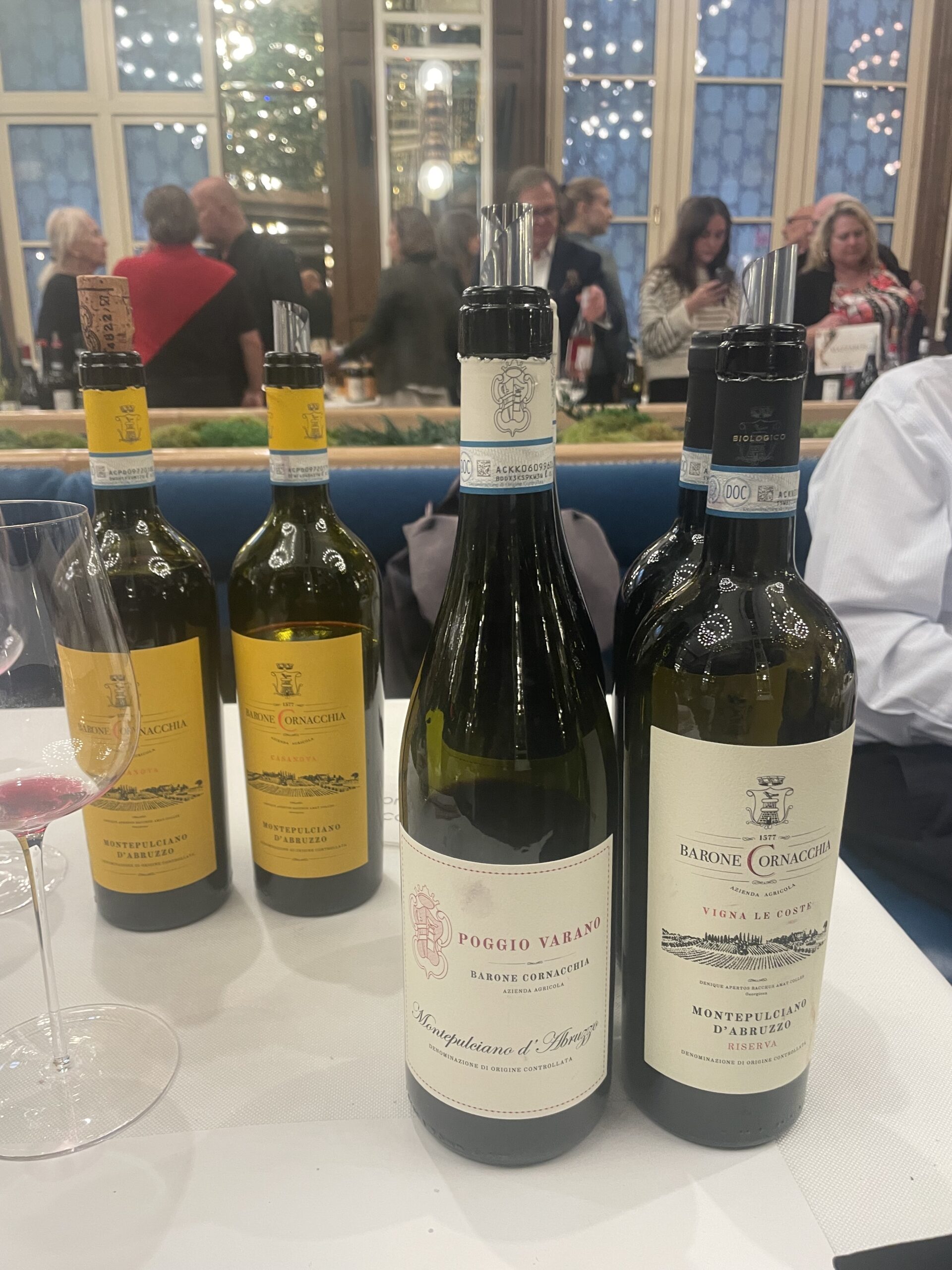
2. Barone Cornacchia Winery: Lots of Skin + Amphora
Certified organic for 20 years, and slowly moving into biodynamic farming, this winery set the record straight for me about skin contact. I tried La travvianno aged two months, which boasts 12 hours of skin contact. Ok, flowery, I see. still curious, I inquired further for clarity on the issue, and boom.* A follow-up wine with 32-day skin contact illuminated matters: Almond, dry profile ~ aroma abounding around like perfume. Herbaceous. “This smells amazing,” I celebrated… “Can it be made into a perfume?” A whole other piece, I’m sure—we will not fail to return to that topic in another article: “Lotioning up Vinaceous Perfumes”…
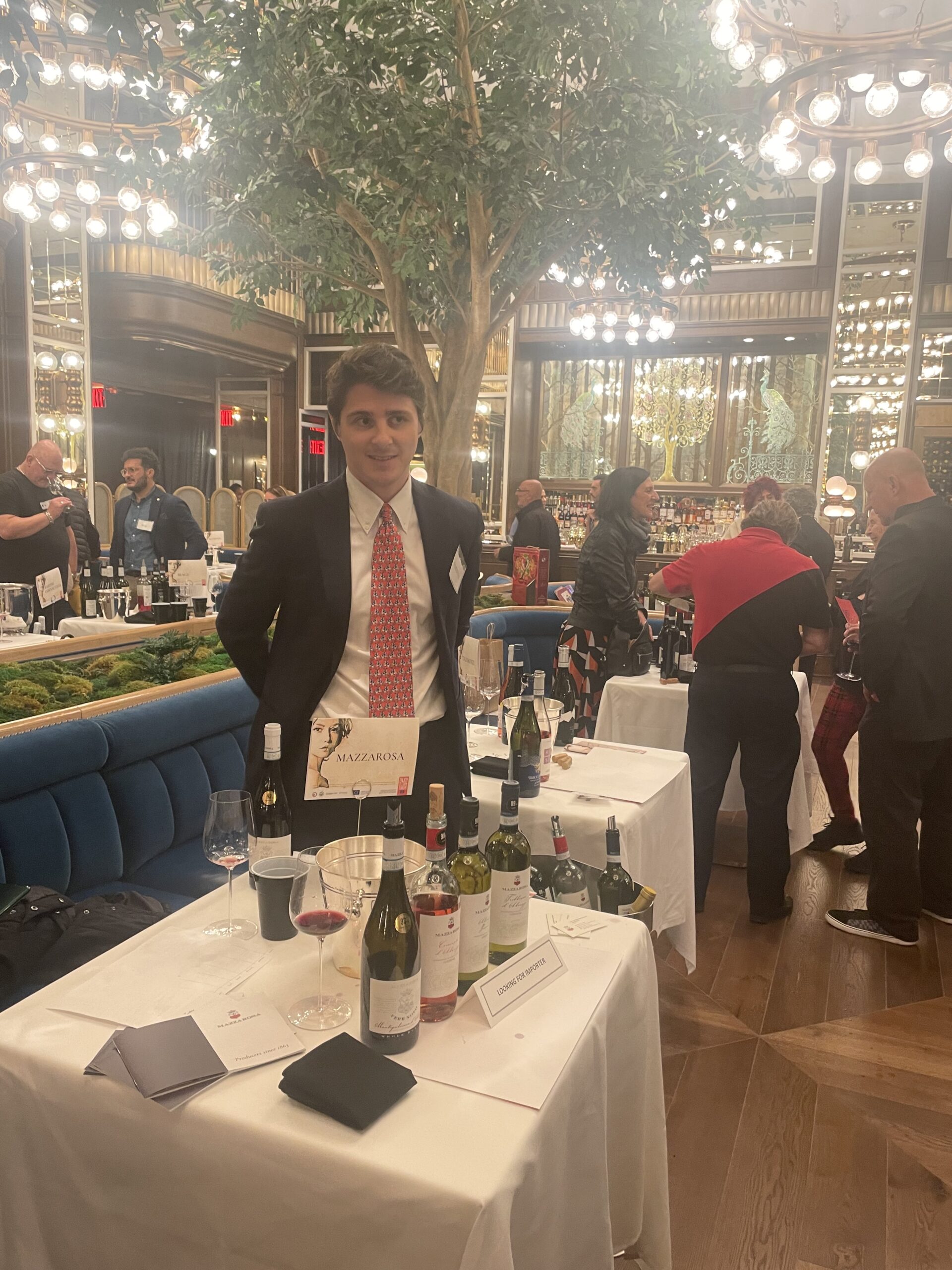
Aged in amphora clay, which originated in Georgia- the ‘Cradle of Wine’ some 6,000 years ago, low and behold yet another subtle layer of the nectar—antidote. Intermediating the neutral, freshening steel and woodsy-infusing oak binaries, amphora is said to not impart additional flavors. Nevertheless, there seem to be no absolutes when it comes to wine, and so I retain a super open mind.
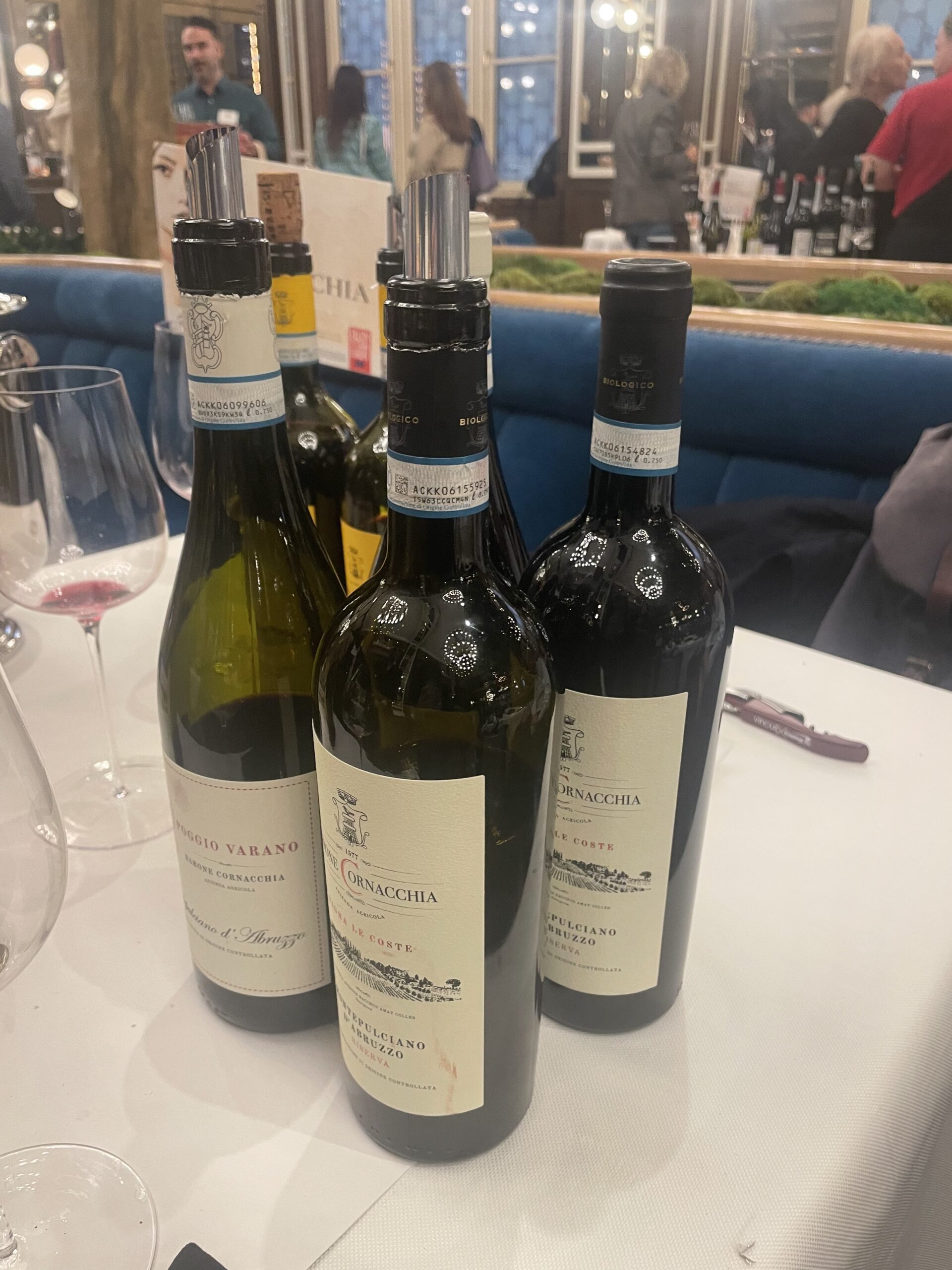
3. Mazzarosa Winery: All about the Steel and Tannins
The Vere Novo Montepulciano places among 25 best wines in the U.S. notes the eloquent Giuseppe. On steel, tannins, and flavor, he intonates:
“Steel is fresher…throw in the grapes with everything, the skins, the rasps or stems as well (green ‘vegetable’ part) and the stems, which are quite greenish, have their own tannins. The skin of the grapes is the part that usually has the tannins, and because montepulciano has a thick skin, it has a lot of tannins. So the way these two things combine, one would think they’d add up but really they kind of off balance eachother, so you have a smoother effect, and a more silky taste/texture.”
In short, I’d never considered how much external processes superimposed upon an albeit naked or half naked or fully clothed grape entity, alongside wind patterns, due to mountainous sea-adjacent topography could inject even more aromatic subtleties into the ultimate gem of a liquid: How much the company of its skin amid outside rhythmic ‘ballooning’ pressure and assuage could actually affect the taste of wine. Albeit stone fruit tangs lined with herbaceous strands, or bulbous berry bursting into curves… containers, years, and skin contact will always influence the poem filled by each wine.
Divine—ly unique, flavors capture photographs of the earth doing her thing during individual grape’s lifetimes. Bring them altogether Por Una Festa, ‘for a party’, and boom: thousands of witnesses, that like sponges absorbed the magnificence of steep mountain winds curling into momentous seascapes some 9 or 18 years ago. Tendrilled clouds merging vaporously unto the crowns of thunderous ocean waves so eager to flex… grapes really do witness so much.
Unlike flowers though, grapes get galvanized… peculiarly so, just ask the Italians. Luxuriating in landscapes for so long, no war or pressing survival concerns, Italians have the time, privacy, resources, and inevitable topographical variety to cultivate some of the best and most unique wines on earth. Cheers !!!
